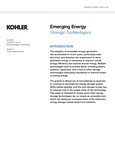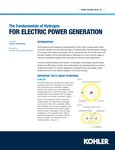The race towards innovative power solutions promises to redefine the future of data center energy consumption. Yet, with these technologies still in development, the industry must navigate the present challenges with existing resources.
Based on my recent chapter in the sustainable data center anthology Greener Data Volume 2, this article explores both the future technologies poised to revolutionize data center power and the immediate, impactful measures available to us today, offering a comprehensive look at how data centers can tackle the issue with a long-term and short-term view simultaneously.
Data center power dilemma
Data centers are at a crossroads. Data demand is going up while available space is going down. In response, the industry is building new data centers, which means that energy consumption is going up while, unfortunately, energy efficiency is staying mostly the same. There are pertinent questions to ask: are we in a crisis, and what’s coming to save the day?
Looking into the crystal ball, emerging technologies can address some of the most pressing power and sustainability issues at hand. For instance, battery storage can pair with any energy source and provide a way to store excess generation for deployment during a peak time. Hydrogen fuel cells emit only water vapor, thereby drastically reducing a facility’s carbon footprint and eliminating local air pollutants.
Gazing into the future of the data center industry, new and upcoming technologies like these have the potential to change the landscape of data center power. However, what does that mean for the present? After all, hydrogen still needs to mature in terms of mass production and distribution, and current-day battery technology still has a relatively short run time.
Although technologies like this are the future, we still need a way to bridge the gap in the meantime while they develop. In order to understand where we are with data center energy usage, it’s helpful to recognize where we started.
Matching methods
For decades, the typical power setup for data centers has been a utility-based source of electricity paired with a backup diesel generator. The advantages for this arrangement are numerous:
- A generator can provide an extended runtime of at least 24 hours, which can extend up to 96 hours and beyond.
- Diesel generators have a fast start time, ready to accept a load in under 10 seconds.
- The production and distribution of diesel is well established so adding fuel to the storage system is reliable and cost-effective.
- Diesel generators have compact designs and can take up little space, especially in terms of the energy density they provide.
For establishing a market-competitive solution for data center power, these characteristics are the benchmarks a new technology is up against.
When looking at a hydrogen fuel cell or a battery energy storage solution – or other emerging technologies such as liquid air energy storage, flywheel energy storage, or solid oxide fuel cells – those power solutions need to operate at the same performance level as diesel generators (or higher), and provide similar advantages. Likely, the future of data center power will involve multiple technologies in addition to diesel generators, acting in combination.
Making a difference today
So, where does that leave us, then? As technology progresses, innovative approaches will emerge. However, until these advancements are practical and tested, data centers need to consider adopting current strategies that can make a significant difference today.
One such strategy is exploring other, more sustainable generator fuel options. One such option can be found in hydrotreated vegetable oil (HVO), also known as renewable diesel (RD). HVO can be used as a direct, one-to-one replacement for fossil diesel while providing a 90 percent reduction in carbon emissions.
Although HVO emissions may not be as low as hydrogen, the primary difference is that HVO is available and ready to use now, and is compatible with many existing generators that are already employed by data centers. As a stopgap solution, it’s a way to significantly reduce harmful emissions immediately.
Another approach to make current backup power more sustainable is through generator aftertreatment systems. Aftertreatment systems, in a nutshell, are pieces of equipment that can be applied to a generator’s exhaust system to reduce pollutant emissions.
An aftertreatment solution can involve components like diesel particulate filters (DPF), selective catalytic reduction (SCR) units, or diesel oxidation catalysts (DOC), alone or in combination. The effectiveness of these technologies is great, able to curb emissions by as much as 94 percent.
Yet another productive action can be found in seeking out more sustainable maintenance programs for backup generators. Traditionally consisting of monthly run times of 30-60 minutes under at least 30 percent load, testing consumes plenty of fuel and emits greenhouse gasses.
There are, however, other methods that substantially cut fuel use and emissions. Options include shorter, no-load tests of just 10 minutes, reducing fuel consumption by 44 percent and emissions by 40 percent, or extending tests to every four months, slashing fuel use by 71 percent and emissions by 69 percent. These strategies offer significant sustainability and cost benefits, leveraging technology to lower environmental impact without compromising reliability.
Big picture, small picture
Today, the data center industry has a huge opportunity to continue to improve upon existing technologies that have demonstrated the ability to create a significant impact on emissions reduction. As they evolve, these new technologies excitingly promise to be major game changers.
These new developments, though, should not completely overshadow what we can do now to make a major impact while we wait for these new technologies to prove out.
Solutions such as renewable fuels and aftertreatment equipment can be used with traditional backup generators to develop a significant impact here and now. After all, a crystal ball can be just as useful for looking into the present as the future.
More from Kohler Power
-

Emerging Energy Storage Technologies
The accelerated adoption of renewable energy
-

The fundamentals of hydrogen for electric power generation
The rising interest in hydrogen for energy production
-

Kohler, cubed
How building ever more resistant data centers can also be green


